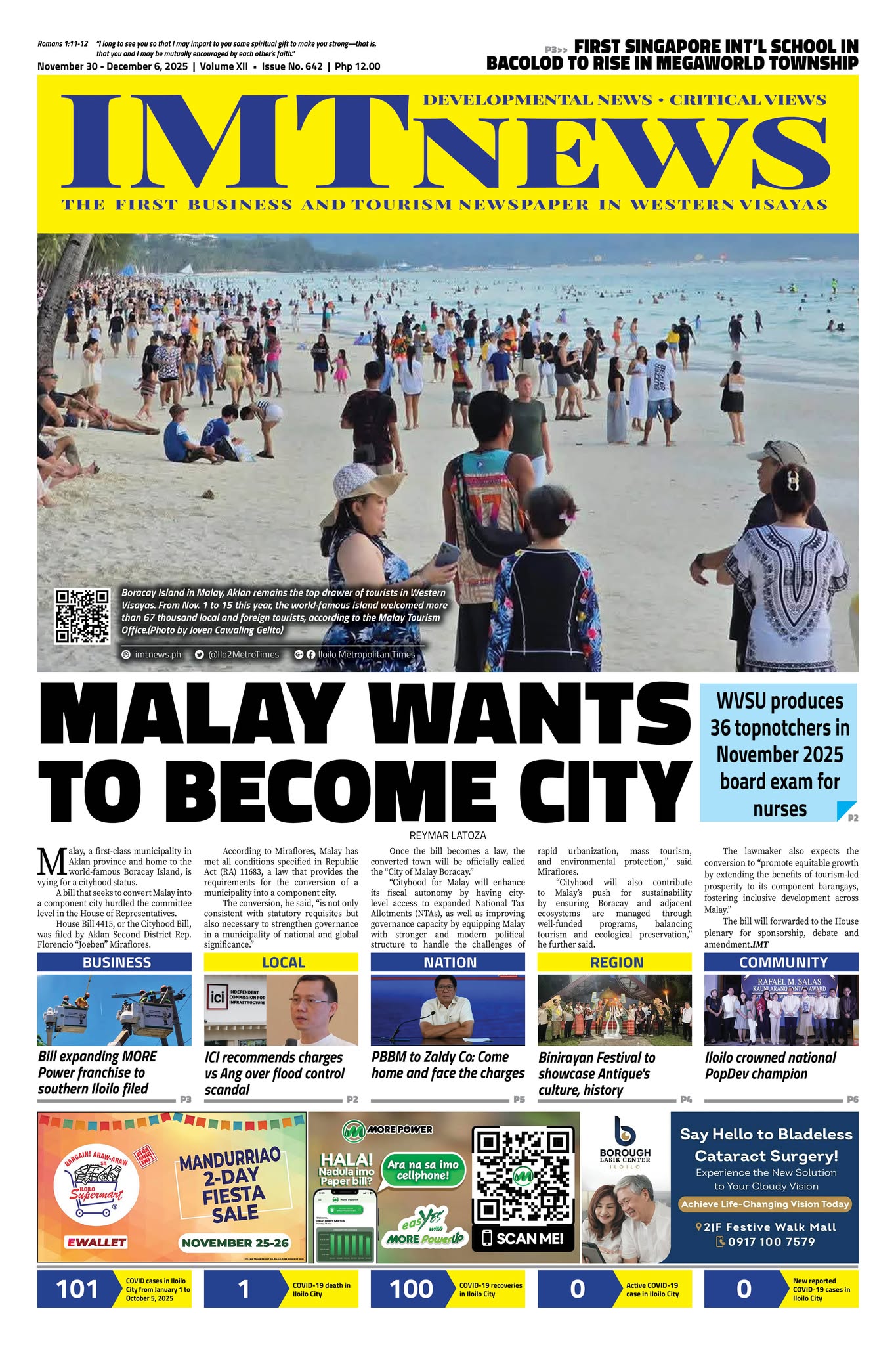Revisiting the Senior High School (SHS) program is not just an academic exercise. It is a civic and moral duty, especially for those who have walked the long corridors of curriculum implementation. Having served as Associate Principal and later as Principal of the Ateneo de Iloilo during the initial rollout of SHS, I have lived through the promises, pains, and paradoxes of this bold national educational reform. It was a privilege and a test of conviction, patience, and clarity to co-pilot a pioneering team. Not everything handed down made sense. Some policies were brilliant on paper but clumsy in practice. Others we had to tweak, discard, or reinvent, always grounded on a simple principle: education must serve the learner, not the system.
The recent proposal of DepEd to cut down SHS core subjects from 15 to five may sound radical, but it is not an entirely new insight. For years, classroom practitioners and administrators have flagged how bloated, fragmented, and inconsistent the SHS curriculum has become. The Asian Development Bank (ADB) consultation confirmed what many of us already knew from the ground. When too many subjects are squeezed into limited hours, depth becomes a casualty. Students memorize to survive, not to learn. Teachers juggle too many objectives, unable to dive deeper where it matters. Streamlining may help, but only if it is driven by local context and long-term purpose, not by international benchmarks alone.
After all, the purpose of SHS was never to add two more years. It was to give our youth a head start in college, work, or entrepreneurship. According to the Philippine Institute for Development Studies (PIDS), however, only 20% of SHS graduates find work aligned with their specialization. At the same time, most still go on to college despite the intent of SHS to be a terminal option for some (PIDS, 2023). The irony is that many students still feel unprepared for college, and employers remain underwhelmed by SHS graduates. We missed the mark somewhere. It is not about more subjects but making the right subjects matter more.
Ateneo de Iloilo faced a similar dilemma up until I retired in 2022. Did we follow every template detail or honor the learner first? We chose the latter. We revised our course offerings to include more contextualized subjects and electives, such as reflection-action inspired Ignatian Spirituality, contextualized research, interdisciplinary entrepreneurial program, actual problem-based feasibility study, student-led leadership engagements, hands-on internship experience, and international career exposure. We treated the curriculum as a living document, not a set of commandments. There were gray areas, of course. But those gray areas became sites of innovation. When students worked on real-world community problems instead of standard modules, their learning made sense. And when learning makes sense, it sticks.
DepEd’s proposal to reduce the track (from four to two—Academic and Teaching Professional or TechPro), remove strands, and allow electives across nine clusters is a step toward learner agency. It breaks the rigidity that has boxed students into academic ghettos. But it also calls for careful scaffolding. Choice is not automatically empowerment. Students must be guided to make informed decisions based on their goals, capacities, and contexts. If an incoming Grade 11 student from a rural school chooses ICT or Industrial Arts and Maritime electives, what support systems will be in place to make that decision viable? Will there be qualified teachers? Facilities? Industry partners? Flexibility must not translate to abandonment.
What many overlook is that curriculum change is not just about what is taught, but also how it is taught and who teaches it. The ongoing mismatch between teacher specialization and subject assignment, cited by EdCom II, where 62% of high school teachers handle subjects outside their college majors, is a silent crisis (EdCom II, 2025). No matter how streamlined or elegant a curriculum is, the learners will suffer if teachers are unsupported, mismatched, or overwhelmed. Training, reskilling, and contextual mentoring must accompany every curricular shift. Otherwise, it is just lipstick on a broken system.
Why not just abolish SHS altogether if it is not working? That would be an expensive mistake. For all its messiness, SHS has opened doors that the old system never could. The problem lies not in the idea but in the unevenness of its execution. We need to honor the intent but improve the delivery. That means grounding reforms on real, disaggregated data, not anecdotal impressions or Facebook hot takes. What works in Iloilo may not work in Basilan. What excites students in Quezon City may bore those in Negros. Localization must not be an afterthought; it must be embedded in policy.
Reforms must also resist the temptation of oversimplification. Reducing core subjects must be counterbalanced by stronger, smarter elective systems that bridge academic learning with workplace realities. Work immersion, for example, should not be a token requirement. It must be substantial, mentored, and industry-aligned. DepEd Undersecretary Gina Gonong rightly pointed out that electives must be chosen carefully to ensure college readiness and career relevance. This requires closer coordination with CHED, TESDA, and industry players—not just in Manila, but across regions. The moment we forget that students do not live in spreadsheets is the moment we fail them.
And let us not forget equity. The new SHS design must not widen the gap between private and public schools. The risk is real. Schools with better funding and faculty depth will thrive under a flexible, elective-rich curriculum. But what about under-resourced public schools with teacher shortages and limited labs? Will their students get the same chance to take advanced STEM or arts electives? Reform, if not inclusive, is just another word for favoritism. That is why implementation must come with capacity-building, not just memos.
When I think about the young people I have met throughout my journey—from Ateneo de Iloilo to community forums in the fourth district of Iloilo or some SUCs—I remember faces, not numbers. I recall three SHS students who built a sustainable water distribution system for the IP community of Sitio Kati-Kati, San Miguel, Jordan, Guimaras, as a product of their feasibility study. Against the odds, I recall a Grade 12 team that turned kayos, a farm weed, into a hopeful, low-cost dengue solution—proof that real science can sprout from the simplest roots. These students did not thrive because the curriculum told them to. They thrived because their teachers carved space for relevance, reflection, and rigor. They were not just taught; they were formed.
In the end, a curriculum is only as good as its soul. You can streamline, rename, or digitize it, but it is still hollow if it fails to cultivate a sense of purpose in learners. Reviewing the SHS curriculum is not just an administrative necessity—it is a moral reckoning. It asks us to remember why we teach, who we teach, and what futures we are shaping. And the real test is not whether we can reduce subjects but whether we can raise standards without raising barriers.
The challenge is not to rewrite the curriculum for convenience but to realign it for coherence. The road to a meaningful SHS reform does not begin in air-conditioned rooms with data-laden PowerPoints. It starts with listening to students, to teachers, to communities. Because the best reforms are not imposed; they are lived.
Doc H calls himself a ”student of and for life” and, like many others, wants a life-giving, why-driven world dedicated to social justice and happiness. His views may not reflect those of his employers or associates.
Senior High rewired






